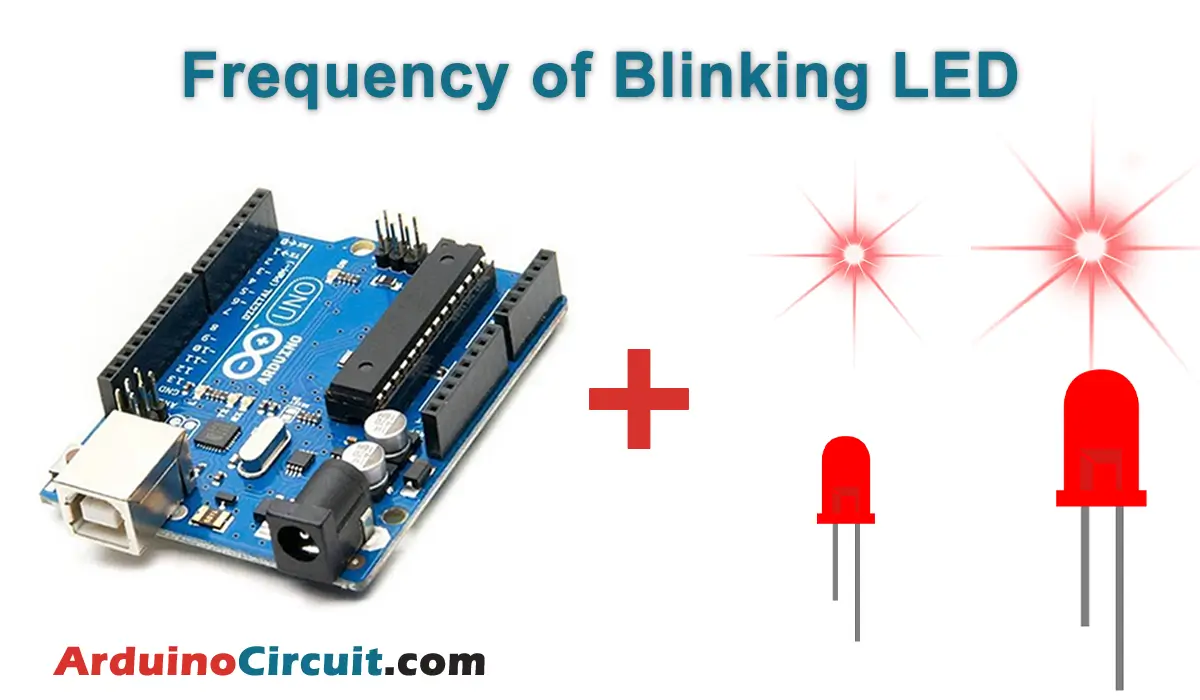Introduction
In this tutorial, we will learn how to Change the Frequency of a Blinking LED with Arduino using two buttons. With the help of one button, we will increase the blinking frequency, while the other button will decrease the frequency of the LED blinking.
This project is perfect for beginners who are looking to learn more about basic electronics and programming. It is also a great way to experiment with LEDs and create unique visual effects for your projects. So let’s get started and learn how to change the frequency of a blinking LED with two buttons!
Hardware Required
You will need the following components for the How to Change Frequency of Blinking LED with Arduino
| Components | # | Buy From Amazon |
|---|---|---|
| Arduino UNO | 1 | Buy Now |
| LED 5mm | 1 | Buy Now |
| Buttons | 2 | Buy Now |
| Resistors 220Ω | 1 | Buy Now |
| Resistors 10KΩ | 2 | Buy Now |
| Jumper Wires | Few | Buy Now |
| Breadboard | 1 | Buy Now |
Circuit Connections
For this circuit, we only need an LED, two buttons, and a few resistors. Connect the positive terminal of the LED to digital pin 9 of the Arduino, and the negative terminal of the LED to a 220-ohm resistor. The other end of the resistor should be connected to the ground. Connect one terminal of each button to digital pins 2 and 3 of the Arduino. The other terminal of the buttons should be connected to the 5V supply of the Arduino. Place a 10k ohm pull-down resistor between each button and the ground.
Circuit Diagram

Working Explanations
The code for this circuit is very simple. When the first button is pressed, the frequency of the LED blinking will increase. Similarly, when the second button is pressed, the frequency of the LED blinking will decrease. We will use the millis() function to create a delay between each blink of the LED.
Installing Arduino IDE Software
First, you will require to Download the updated version of Arduino IDE Software and Install it on your PC or laptop. if you Learn How to install the Arduino step-by-step guide then click on how to install Arduino Button given Blow
Code
//For more Projects: www.arduinocircuit.com
const int ledPin = 9;
const int buttonPin1 = 12; // increase the counter
const int buttonPin2 = 13; // Decrease the counter
int lastState1 = HIGH; // the previous state from the input pin
int lastState2 = HIGH;
int currentState1, currentState2; // the current reading from the input pin
int pushCounter = 0; // counter for the number of button presses
int delay_t = 100;
int ledState = LOW;
void setup() {
pinMode(ledPin, OUTPUT);
pinMode(buttonPin1, INPUT);
pinMode(buttonPin2, INPUT);
}
void loop() {
currentState1 = digitalRead(buttonPin1);
currentState2 = digitalRead(buttonPin2);
if (currentState1 != lastState1) {
if (currentState1 == LOW) {
pushCounter++;
}
}
lastState1 = currentState1;
if (currentState2 != lastState2) {
if (currentState2 == LOW) {
pushCounter--;
}
}
delay_t = 100 + pushCounter * 100;
blink_without_delay(delay_t);
lastState2 = currentState2;
if (pushCounter >= 10) {
pushCounter = 0;
}
else if (pushCounter < 0) {
pushCounter = 0;
}
delay(50);
}
unsigned long previousMillis = 0; // will store last time LED was updated
void blink_without_delay(long interval) {
unsigned long currentMillis = millis();
if (currentMillis - previousMillis >= interval) {
ledState = !ledState;
digitalWrite(ledPin, ledState);
previousMillis = currentMillis;
}
}Applications
This circuit uses in many applications where the frequency of an LED needs to be adjusted, such as
- This Project uses Decorative lighting.
- This Project uses Christmas lights.
- This Project also uses Party lights.





